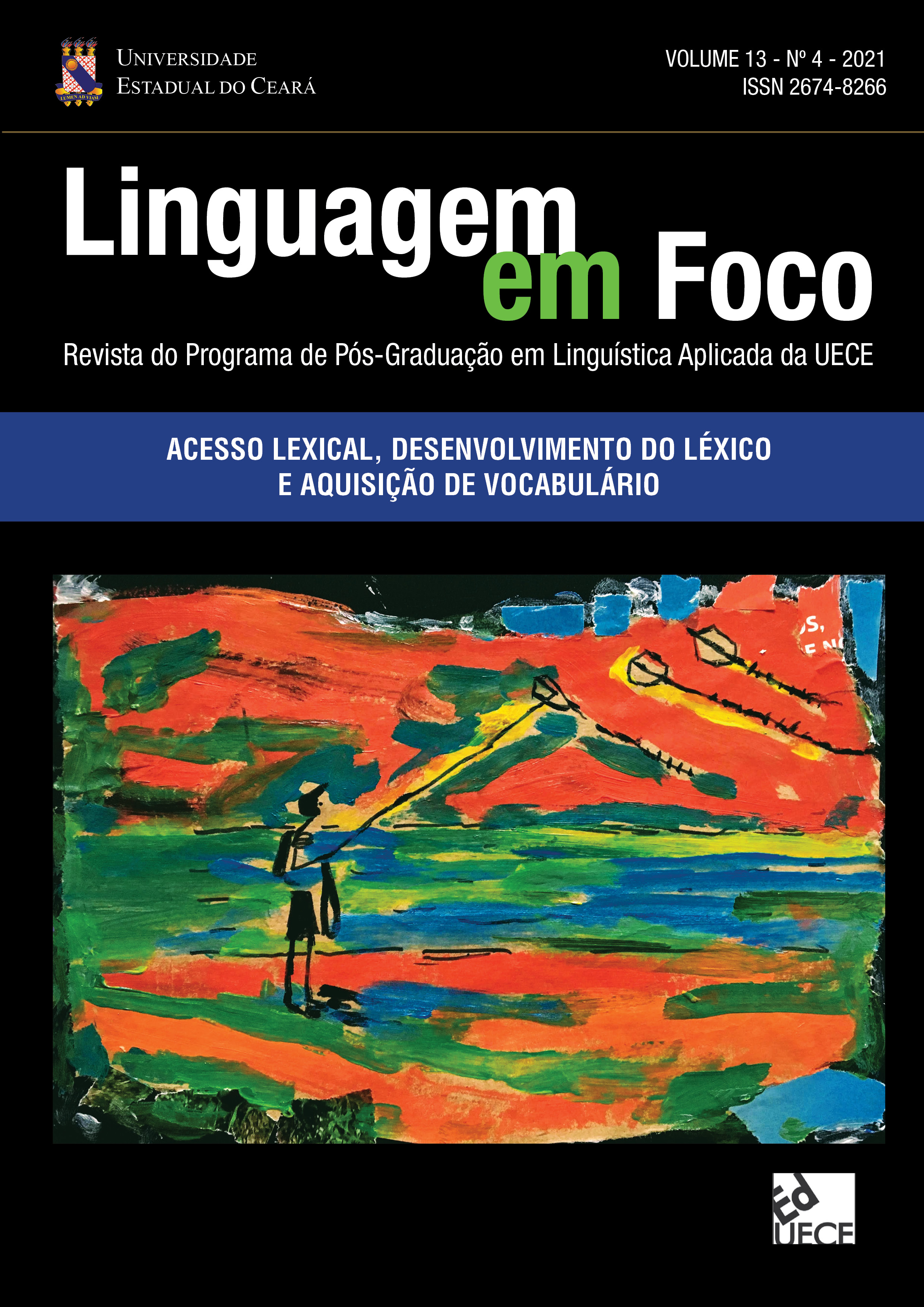Multilinguals in a Monolingual Community
The Influence of Non-linguistic Switching Cost and Awareness of Language Environment on Intentional and Unintentional Language Switch
DOI:
https://doi.org/10.46230/2674-8266-13-7354Palabras clave:
Code-Switching, Multilingual, Executive Functions, Awareness of Language EnvironmentResumen
Multilinguals who live in their native multilingual communities are constantly switching between languages, whereas those who live in monolingual communities need to constrain their code-switching. Malaysia is a multilingual country in which people mix languages on a daily basis, whereas, in Taiwan, Mandarin is predominately used and people are more cautious about code-switching. Therefore, in the current study, we investigated what factors might facilitate Malaysian-Chinese students to reduce the unintentional switching between languages to adapt to the language environment in Taiwan. Malaysian-Chinese who live in Malaysia (MIM) and Taiwan (MIT) were recruited to investigate whether and how non-linguistic code-switching and their awareness of language environment (ALE) influence their intentional and unintentional code-switching experiences. Participants' non-verbal code-switching was measured by a color/shape switching task, whereas ALE and code-switching experiences were measured by questionnaires. The multiple regression analyses of MIT's responses showed that the moderation of non-linguistic switch cost and ALE significantly predicted MIT's unintentional code-switching. Moreover, the simple slope analysis showed that MIT with high executive control have a dynamic unintentional switch in which the higher level of ALE is associated with lower unintentional switch. However, MIT with low executive control have a static unintentional switch, uninfluenced by their level of ALE. These results suggested that multilinguals' executive control along with their awareness of the language environment help them adapt to living in a community with a predominant language.
Descargas
Citas
ARDILA, A.; RAMOS, E. Normal and abnormal aging in bilinguals. Dementia & Neuropsychologia, v. 2, n. 4, p. 242-247, 2008
BIALYSTOK, E.; MAJUMDER, S. The relationship between bilingualism and the development of cognitive processes in problem solving. Applied Psycholinguistics, v. 19, n. 1, p. 69-85, 1998.
BIALYSTOK, E.; MARTIN, M. M. Attention and inhibition in bilingual children: evidence from the dimensional change card sort task. Developmental Science, v. 7, n. 3, p. 325-339, 2004.
BIALYSTOK, E.; MARTIN, M. M.; VISWANATHAN, M. Bilingualism across the lifespan: The rise and fall of inhibitory control. International Journal of Bilingualism, v. 9, n. 1, p. 103-119, 2005.
BLUMENFELD, H. K.; MARIAN, V. Parallel language activation and cognitive control during spoken word recognition in bilinguals. Journal of Cognitive Psychology, v. 25, n. 5, p. 547-567, 2013.
COLZATO, L. S., BAJO, M. T.; VAN DEN WILDENBERG, W.; PAOLIERI, D.; NIEUWENHUIS, S.; LA HEJI, W.; HOMMEL, B. How does bilingualism improve executive control? A comparison of active and reactive inhibition mechanisms. Journal of Experimental Psychology: Learning, Memory, and Cognition, v. 34, n. 2, p. 302-312, 2008.
FESTMAN, J.; RODRIGUEZ-FORNELLS, A.; MÜNTE, T. F. Individual differences in control of language interference in late bilinguals are mainly related to general executive abilities. Behavioral and Brain Functions, v. 6, n. 1, p. 5, 2010.
Fulfilling your child’s dreams of studying abroad. The Edge Markets. Disponível em: <https://www.theedgemarkets.com/content/advertise/fulfilling-your-child-dreams-of-studying-abroad>. Acesso em: 29 nov. 2021.
GREEN, D. W. Control, activation, and resource: A framework and a model for the control of speech in bilinguals. Brain and Language, v. 27, n. 2, p. 210-223, 1986.
HEREDIA, R. R.; ALTARRIBA, J. Bilingual Language Mixing: Why Do Bilinguals Code-Switch? Current Directions in Psychological Science, v. 10, n. 5, p. 164-168, 2001.
HEUER, S.; HALLOWELL, B. A novel eye-tracking method to assess attention allocation in individuals with and without aphasia using a dual-task paradigm. Journal of Communication Disorders, v. 55, p. 15-30, 2015.
HEUER, S.; PINKE, M. L. Development of an eye-tracking method to assess mental set switching in people with aphasia. Brain Injury, v. 31, n. 5, p. 686-696, 2017.
HOSHINO, N.; KROLL, J. F. Cognate effects in picture naming: Does cross-language activation survive a change of script? Cognition, v. 106, n. 1, p. 501-511, 2008.
LI, P.; ZHANG, F.; TSAI, E.; PULS, B. Language history questionnaire (LHQ 2.0): A new dynamic web-based research tool. Bilingualism: Language and Cognition, v. 17, n. 3, p. 673.680, 2014.
LI, P.; ZHANG, F.; YU, A.; ZHAO, X. Language History Questionnaire (LHQ3): An enhanced tool for assessing multilingual experience. Bilingualism: Language and Cognition, v. 23, n. 5, p. 938-944, 2019.
LOGAN, G. D. On the ability to inhibit thought and action: A users' guide to the stop signal paradigm. In: DAGENBACH, D.; CARR, T. H. (Eds). Inhibitory processes in attention, memory, and language. Cambridge, United Kingdom, Academic Press, 1994. p. 189-239. ISBN 9780122004100.
MARIAN, V.; SPIVEY, M. Bilingual and monolingual processing of competing lexical items. Applied Psycholinguistics, v. 24, n. 2, p. 173-193, 2003.
Malaysia: Overview of Students - 新南向人才培育計畫. Edunsbp.moe.gov.tw. Disponível em: <https://www.edunsbp.moe.gov.tw/overview_students_en1004.html>. Acesso em: 29 nov. 2021.
MISHRA, R. K.; SINGH, N. Language non-selective activation of orthography during spoken word processing in Hindi–English sequential bilinguals: an eye tracking visual world study. Reading and Writing, v. 27, n. 1, p. 129-151, 2013.
MIYAKE, A.; FRIEDMAN, N. P.; EMERSON, M. J.; WITZKI, A. H.; HOWERTER, A.; WAGER, T. D. The Unity and Diversity of Executive Functions and Their Contributions to Complex “Frontal Lobe” Tasks: A Latent Variable Analysis. Cognitive Psychology, v. 41, n. 1, p. 49-100, 2000.
NUNNALLY, J. C.; BERNSTEIN, I. R. Psychometric Theory. New York, McGraw-Hill, 1994. ISBN:978-0070478497
POARCH, G. J.; VAN HELL, J. G. Executive functions and inhibitory control in multilingual children: Evidence from second-language learners, bilinguals, and trilinguals. Journal of Experimental Child Psychology, v. 113, n. 4, p. 535-551, 2012.
POULISSE, N.; BONGAERTS, T. First language use in second language production. Applied Linguistics, v. 15, n. 1, p. 36-57, 1994.
PRIOR, A.; GOLLAN, T. Good Language-Switchers are Good Task-Switchers: Evidence from Spanish–English and Mandarin–English Bilinguals. Journal of the International Neuropsychological Society, v. 17, n. 4, p. 682-691, 2011.
RODRIGUEZ-FORNELLS, A.; KRÄMER, U. M.; LORENZO-SEVA, U.; FESTMAN, J.; MUNTE, T. F. Self-Assessment of Individual Differences in Language Switching. Frontiers in Psychology, v. 2, 2012.
SOVERI, A.; RODRIGUEZ-FORNELLS, A; LAINE, M. Is There a Relationship between Language Switching and Executive Functions in Bilingualism? Introducing a within group Analysis Approach. Frontiers in Psychology, v. 2, 2011.
STARREVELD, P. A.; DE GROOT, A. M. B.; ROSSMARK, B. M. M.; VAN HELL, G. Parallel language activation during word processing in bilinguals: Evidence from word production in sentence context. Bilingualism: Language and Cognition, v. 17, n. 2, p. 258-276, 2013.
TIEGO, J.; TESTA, R.; BELLGROVE, M. A.; PANTELIS, C.; WHITTLE, S. A Hierarchical Model of Inhibitory Control. Frontiers in Psychology, v. 9, 2018.
TABER, K. S. The Use of Cronbach’s Alpha When Developing and Reporting Research Instruments in Science Education. Research in Science Education, v. 48, n. 6, p. 1273-1296, 2017.
ZENTELLA, A. C. Growing up bilingual: Puerto Rican Children in New York. Malden, MA: Blackwell, 1997. ISBN: 978-1557864079
Descargas
Publicado
Cómo citar
Número
Sección
Licencia
Derechos de autor 2022 Li-Hao Yeh, Jie Yee Lim

Esta obra está bajo una licencia internacional Creative Commons Atribución 4.0.
Os autores que publicam na Linguagem em Foco concordam com os seguintes termos:
- Os autores mantêm os direitos autorais e concedem à revista o direito de primeira publicação. Os artigos estão simultaneamente licenciados sob a Creative Commons Attribution License que permite a partilha do trabalho com reconhecimento da sua autoria e da publicação inicial nesta revista.
- Os conceitos emitidos em artigos assinados são de absoluta e exclusiva responsabilidade de seus autores. Para tanto, solicitamos uma Declaração de Direito Autoral, que deve ser submetido junto ao manuscrito como Documento Suplementar.
- Os autores têm autorização para disponibilizar a versão do texto publicada na Linguagem em Foco em repositórios institucionais ou outras plataformas de distribuição de trabalhos acadêmicos (ex. ResearchGate, Academia.edu).





























